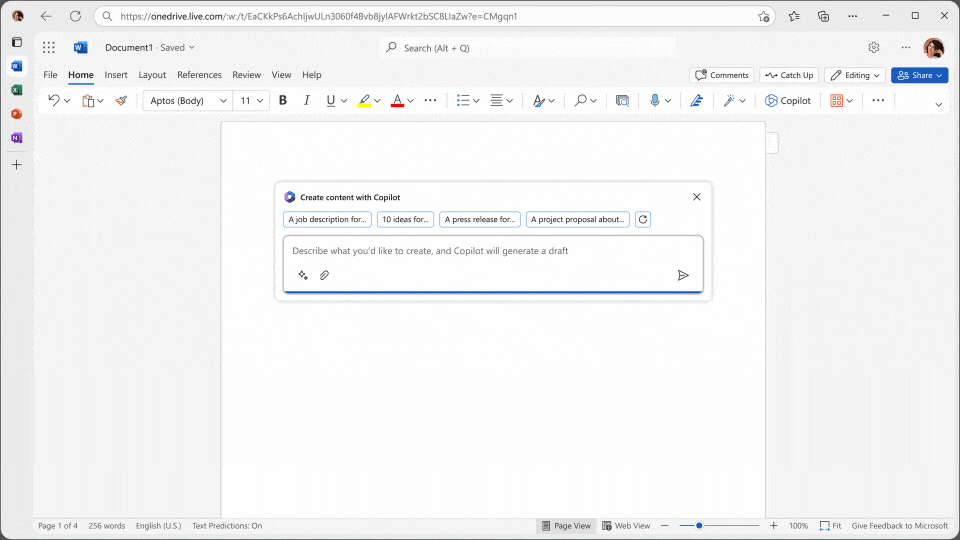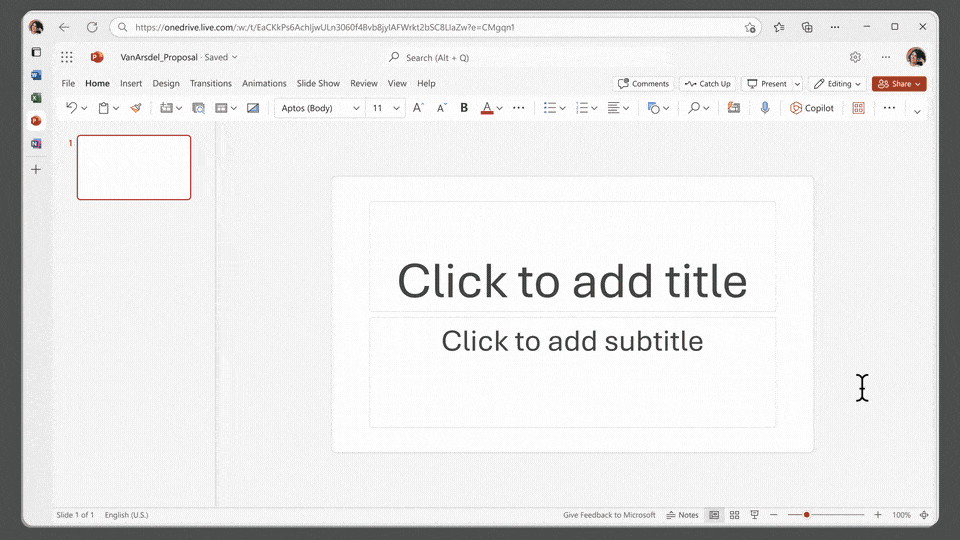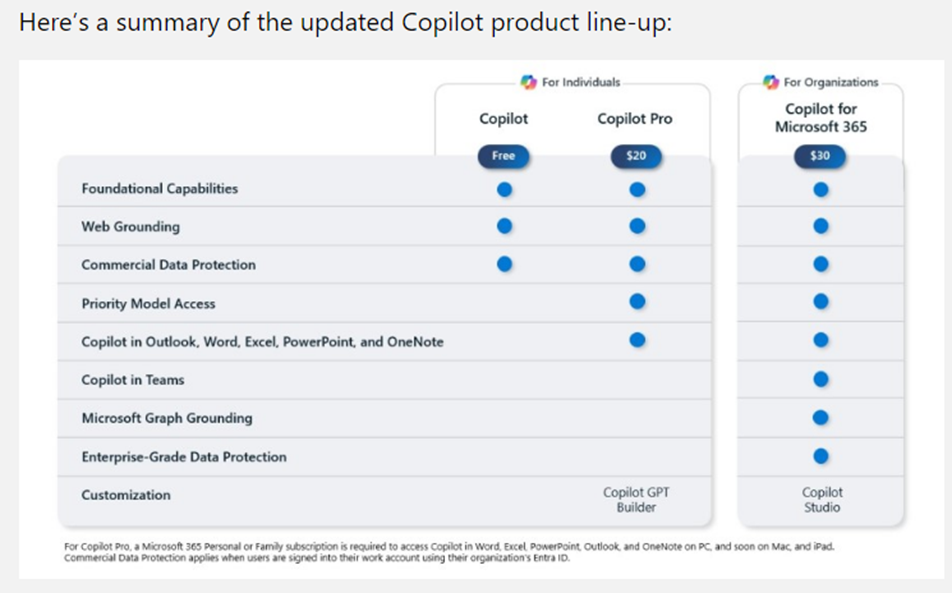What You Need to Know About Copilot for Microsoft 365
Last Updated 3/15/2024
Today's workers are challenged to find the time to be productive. In the 2023 work trend report, Microsoft released some interesting statistics, 57% of Microsoft 365 users spend their time in communication tools (Outlook, Teams Chat, and Teams Meetings), and 43% of their time is spent on creation tools such as Word, PowerPoint, Excel. This constant need for communication leaves less focused time to do the day and day work needed.
How do we adapt and remove this digital debt and let our brains process it all? How do we innovate quicker and do task-switching less?
One of the most promising developments to solve this is the recent announcement of Microsoft 365 Copilot—a solution combining large language models (LLMs) with your data to enhance productivity like never before.
This blog covers everything you need to know about Copilot for Microsoft 365 and how your organization prepare for its release.
Table of Contents
- What is Copilot for Microsoft 365?
- What does Copilot for Microsoft 365 do?
- How does Copilot for Microsoft 365 work?
- When will Copilot for Microsoft 365 be released?
- What is included in Copilot for Microsoft 365?
- What is Copilot for Microsoft 365 license requirements?
- What does Copilot for Microsoft 365 cost?
- Do all my users need Copilot for Microsoft 365?
- How can I prepare for Copilot for Microsoft 365?
What is Copilot for Microsoft 365?
Copilot for Microsoft 365 also known as Microsoft 365, is a sophisticated processing and orchestration engine that provides generative AI powered productivity capabilities by coordinating the following components:
- Large language models (LLMs)
- Content in Microsoft Graph, such as emails, chats, and documents that you have permission to access.
- The Microsoft 365 apps that you use every day, such as Word and PowerPoint.
According to Microsoft, “Copilot is more than OpenAI’s ChatGPT embedded into Microsoft 365. It’s a sophisticated processing and orchestration engine working behind the scenes to combine the power of large language models (LLMs), including GPT-4, with the Microsoft 365 apps and your business data in the Microsoft Graph — now accessible to everyone through natural language.”
What does Copilot for Microsoft 365 do?
Copilot for Microsoft 365 is an AI-powered productivity tool that uses large language models (LLMs) and integrates your data with the Microsoft Graph and Microsoft 365 Apps. It works alongside popular Microsoft 365 Apps such as Word, Excel, PowerPoint, Outlook, Teams, and more.
One of the most exciting features that Copilot bring is Microsoft 365 Chat. "Microsoft 365 Chat is the new hero experience for Copilot for Microsoft 365 and goes far beyond simple questions and answers. It combs across your entire universe of data—all your emails, meetings, chats, documents, and more, plus the web—to solve your most complex problems at work."
The Copilot responses can then be incorporated into emails or included as slides in a presentation. The possibilities are truly limitless. The report also contains footnotes showing where it sourced particular data.
You will interact through prompts such as the following.
- "Summarize the chats, emails, and documents about last night's Cotoso escalation."
- "What is the next milestone on our Security Modernization Project? Were there any risks identified? Help me brainstorm a list of some potential mitigations."
- "Write a new planning overview in the style of ABC document that contains the planning timeline from ABC presentation PowerPoint and incorporates the project list in the email from Joe Smith."
How does Copilot for Microsoft 365 work?
To be clear, Copilot is not calling the public OpenAI service that powers ChatGPT. Copilot for Microsoft 365 uses its own private instances of the large language models hosted in the Microsoft Cloud. Copilot combines LLM, Microsoft Search, and Microsoft Graph.
Microsoft Search retrieves information from across Microsoft 365 apps to feed the prompts. Then, Microsoft Graph adds additional information about the relationships and activities over your organization's data.
For example, if someone asks, "Did anything happen yesterday with James?" An LLM alone can't answer this question. Copilot uses information from Microsoft Graph like meetings, email threads, and document sharing to formulate a cited response.
When will Copilot for Microsoft 365 be released?
- Copilot for Microsoft 365 was released on January 16th, 2024.
What are the different Copilots?
Copilot in Word. Copilot for Microsoft 365 in Word aids in writing, editing, summarizing, and creating content. Given a brief prompt, it can draft an entire document, pulling in information from your organization as needed. It can also add content to existing documents, summarize text, and rewrite sections to make them more concise. Imagine being able to draft a two-page project proposal based on data from meeting notes and an Excel spreadsheet with just a simple command.

Copilot in Excel. Copilot in Excel enables you to analyze and explore your data more intuitively. Ask Copilot questions about your data set in natural language, and it will reveal correlations, propose what-if scenarios, and suggest new formulas based on your questions. For example, you can ask it to give a breakdown of sales by type and channel or model the impact of a variable change on your gross margin.
Copilot in PowerPoint. Copilot in PowerPoint assists in turning your ideas into stunning presentations. It can transform existing documents into complete presentations with speaker notes and sources or start a new presentation from a simple prompt or outline. It can even condense lengthy presentations at the click of a button and adjust layouts, reformat text, and time animations with natural language commands.

Copilot in Outlook. Copilot in Outlook helps manage your inbox and messages more efficiently. It can summarize lengthy email threads, help you understand different viewpoints, and answer open questions. It can also draft professional messages for you, pulling from other emails or content you can access across Microsoft 365.
Copilot in Teams. Copilot is also integrated into Microsoft Teams, helping to manage meetings and communications effectively. It helps you keep track of your schedule, prepare for meetings, and follow up on action items. This reduces the time spent organizing and allows you to focus more on productive discussions.
.gif?width=960&height=540&name=copilot-chat_web%20(1).gif)
What are the Copilot for Microsoft 365 license requirements?
Copilot for Microsoft 365 is now available for organizations of all sizes — with no seat minimum.
Copilot for Microsoft 365 is available as an add-on to the following SKUs:
- Microsoft 365 E3, Microsoft 365 E5
- Microsoft 365 Business Premium and Business Standard
Commercial customers can purchase Copilot for Microsoft 365 through ProArch, a tier 1 Microsoft CSP partner.
Education faculty and staff are also eligible for Copilot for Microsoft 365.
What does Copilot for Microsoft 365 cost?
The cost of Copilot for Microsoft 365 is $30 per user per month as an add-on to the previously mentioned SKUs. Licensing is paid annually, with no monthly payment option offered.
A lighter version of Copilot for consumers called Copilot Pro will cost $20 per user per month and includes a subset of capabilities offered in Copilot for Microsoft 365 but will offer a monthly subscription model.

That being said, you do not have to buy Copilot for every user. It's actually expected that you won't. This is where your AI strategy begins, deciding who within the organization will see the most value and ROI from Microsoft 365 Copilot.
Microsoft's CFO Amy Hood said, "When we believe we're adding a lot of value, and frankly, that's what the Copilots are doing and some productivity improvement."
Do all users need Copilot for Microsoft 365?
Before provisioning any licensing, it is crucial to first define the use cases for Copilot for Microsoft 365. What goals can Copilot for Microsoft 365 help you achieve? What users can it empower most? What processes can it help automate?
You want to make sure your investment in Copilot for Microsoft 365 licensing is going to pay off sooner rather than later. ProArch's Copilot for Microsoft 365 Readiness Assessment can help you determine the best use cases to start with.
How to Prepare for Microsoft 365 Copilot
How can you prepare for the Copilot launch and maximize your business productivity?
First, you need to have a digital foundation to support Copilot.
- Move to Microsoft 365 Apps for your productivity tools (OneDrive, Exchange Online, SharePoint).
- Update your device hardware and operating systems (Windows 11).
- Enable modern communication platforms (Teams and Voice).
Once you have the foundational tools in place you'll need to:
- Check and refine SharePoint and Teams policies.
- Rethink SharePoint and Teams structure and access rights.
- Check and refine your organization's document management and privacy policies.
- Organize and cleanse data.
- Create an AI policy. Use this AI policy template to get it done.
- Create straightforward instructions and train people where to store documents and how to share them in a correct and safe way.
Copilot for Microsoft 365 represents the future of work—where AI collaborates with humans, making work more productive and satisfying. It's not just about doing more work in less time; it's about doing more meaningful work and letting AI handle the rest.
ProArch is a top Microsoft Partner. We can help you get ready for Copilot with our Microsoft 365 Copilot Readiness Assessment. Maximize your Microsoft 365 investment and leverage the revolutionary potential of Copilot for Microsoft.

Director of Marketing Rebecca leads ProArch's marketing efforts, seamlessly blending technology and storytelling to assist clients in their buying journey. She is dedicated to presenting technological solutions in a compelling manner that drives significant growth for the company. Collaborating closely with sales, engineering, leadership, and HR teams, Rebecca sets the strategic vision for ProArch and ensures alignment across the organization. Her strategic, visionary, and detail-oriented approach shapes ProArch’s brand to be synonymous with reimagining technology to achieve business objectives.


